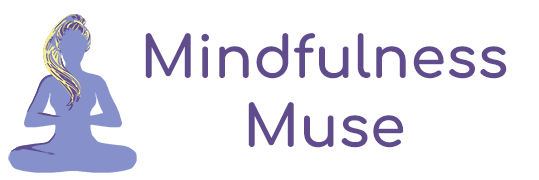Anger Inoculation in 4 Steps

“Holding on to anger is like grasping a hot coal with the intent of throwing it at someone else; you are the one who gets burned.” – Buddha
When anger is unexplored or misunderstood, it is easy for it to become an overwhelming and destructive force. It doesn’t have to be this way. It is possible to learn from anger, use it constructively, and be capable of facing situations that tend to evoke the anger response with greater skill and mindfulness.
Davis (2008) explains that “the idea behind anger inoculation is that if you progressively expose yourself to memories of more and more provocative anger situations – while using coping skills – you will learn to manage the anger response.” This technique, first utilized by Raymond Novaco in 1975, is backed up by research that indicates success in reducing anger-driven aggression.
Anger inoculation won’t prevent you from feeling the emotion of anger. Rather, it gives you effective coping strategies so that you may more confidently face situations that typically provoke anger without losing control and damaging important relationships. Anger does not have to be a dreaded emotional enemy to be feared and avoided. We can learn from anger and receive benefits from the useful functions of anger without succumbing to emotional chaos.
4 Steps of Anger Inoculation
(1) Relaxation Skills
Anger typically triggers a “fight-or-flight” physiological response that prepares the body to stay and fight or flee the scene. This natural physiological arousal can provoke more angry thoughts, leading to a steady escalation of the emotional experience of anger. You can effectively intervene in this physiological response to anger by engaging in specific relaxation techniques. Depending upon the situation, you can choose between the following relaxation skills:
- Diaphragmatic breathing
- Progressive muscle relaxation
- Cue-controlled relaxation
- Safe place visualization
(2) Coping Thoughts
Being prepared with coping thoughts is an effective way to ward off common cognitive distortions that exacerbate the emotion of anger. Your thinking has an incredible influence on how intense and prolonged you will experience anger. When your thoughts are fueling the fire, so to speak, it is not surprising when your level of anger intensifies. Conversely, when your thoughts are designed to accept, validate, and neutralize anger, the emotion deescalates. Allow your thinking to guide and transform your emotions.
General Coping Thoughts:
- Getting upset will not help this situation.
- Breathe… I notice my slow and steady breath.
- I am able to remain calm and relaxed.
- This is temporary. This will pass.
- I am mindful of my thoughts and behaviors.
- It us up to me how to respond in this situation.
- “Respond”… don’t “react.”
- I need some personal space to cool down before continuing in this conversation.
- I have choices about how to handle this situation.
- I choose to accept this situation.
- I choose to change this situation.
- I choose to leave this situation.
(3) Inoculation
Reflect upon five specific situations when you have struggled with anger in your life (the more recent and/or intense, the better). Take the time to write down each situation on a sheet of paper. Beneath each anger-triggering event, write down the following:
- The specific thoughts that triggered your anger.
- Any cognitive distortions that you notice embedded within those thoughts.
- Coping thoughts that you can use to counteract or accept those thoughts.
- Revise the cognitive distortions to allow them to become more accurate and based in reality.
Example:
- Anger-triggering thought: “He always does stuff like this. He’s just a jerk.”
- Cognitive distortions: Overgeneralization, labeling.
- Coping / revised trigger thought: “This actually hasn’t happened in some time. Maybe he was just having a bad day.”
(4) Real-Life Coping
While it is impossible to predict the occurrence of all situations and events that will provoke anger, it is possible to be prepared for those situations when they do occur. You can have an increased sense of mindful awareness of your bodily sensations when you begin to feel the emotion of anger. This awareness allows you to observe your experience of anger in a way that allows you to put some distance between you as “participant” and “observer.” When you become mindfully aware of how you are thinking, feeling, and behaving in situations that typically provoke anger, you have a greater ability to intentionally choose how to respond.
If you know in advance that you are entering into a situation that tends to elicit anger, make the decision to come prepared with mindful awareness of yourself, knowledge of your preferred relaxation techniques, and soothing coping thoughts. Once you start practicing new ways of handling anger-provoking situations, this process will become more natural and require less conscious effort. If you forget to use your real-life coping plan in the moment, go back to that scene in your mind later on and mindfully notice exactly what happened and at what point in the chain of events you felt yourself losing control and mindful awareness.
– – – – – – – – – – – – – – – – – – – – – – – – – – – – – – – – – – – – – – – – – – – – – – – – – – – – – – – – – – – – – – – – –
Davis, M., Eshelman, E.R., & McKay, M. (2008). The relaxation and stress reduction workbook. Oakland, CA: New Harbinger Publications, Inc.
Featured image: Angry Face by Piez / CC BY 2.0
